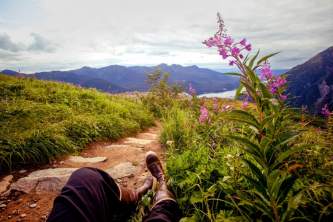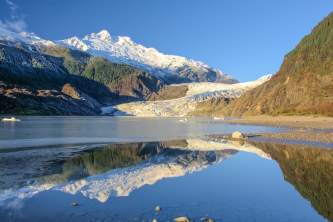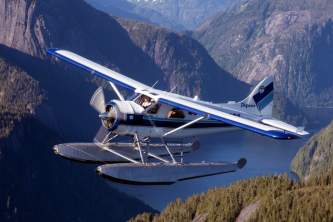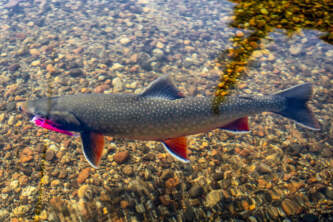Tongass National Forest
At nearly 17 million acres, the Tongass National Forest holds the distinction as the largest national forest in the system, dwarfing the second largest, the Chugach, by more than 11.5 million acres. More than 500 miles long and 100 miles wide, it encompasses 80 percent all the land in Alaska's Panhandle, extending from Ketchikan to Yakutat. The Tongass also has the honor of being the largest contiguous temperate rainforest in the world. This enduring set of ecosystems is managed for the enjoyment of present and future generations.
An archipelago straddled by an icefield mainland, the Tongass is among the wildest places in Alaska due to its isolation, few roads and isolated development. Parts of it, including the caves of Prince of Wales Island, are still being explored. There are 19 designated wilderness areas. Although known for its giant, old-growth spruce and hemlock trees, 40 percent of the Tongass is rock, ice, musket or water.
Wildlife abounds. People who live here have untangled humpback whales from their fishing nets, lifted moose trapped in holes in icy rivers and watched brown bears feeding on sea lions. Sightings of humpback whales, sea lions and seals are commonplace. Spend much time on the water and you'll see a pod of orcas. Bald eagles and wild salmon are ubiquitous.
The 1 million-acre Admiralty Island is populated by roughly 1,700 brown bears - or approximately one grizzly every square mile. The 60-acre St. Lazaria Island offshore Sitka shelters more than 500,000 seabirds, including 1,000 breeding pairs of tufted puffins and as many rhinoceros auklets.
There are countless islands, hundreds of salmon streams, scores of glaciers and a half-dozen natural hot springs.
Many people who live here make their living - or at least a chunk of it - from the forest's water and the land, either as fishermen, guides, hunters, loggers or miners, or as managers and employees of agencies that preside over its varied lands and creatures. Half of the forest's population of 70,000 people live in one city - Juneau.
For independent travelers, the U.S. Forest Service maintains about 240 rustic, unfurnished cabins in Southeast, plus three-sided shelters where you pitch a tent. Cabins typically rent for less than $50 during the high season and most sleep at least six people. You can also see our list of campgrounds and trails, and visit the agency's website for the Tongass, for more information, including maps and locations for fishing, mountain biking, OHV riding and other activities.
Towns throughout the forest also maintain their own visitor's centers, typically operated by the municipality or chamber of commerce.
Getting Here
Reaching Tongass destinations requires extra effort and resources. For independent visitors arriving from outside the state, jet service into Juneau serves as the starting point in the forest's northern half (as far south as Sitka) while Ketchikan serves as hub for sports south of there. The Alaska Marine Highway System, 1-800-642-0066, and air taxis serve major towns. Private or chartered vessels take visitors into smaller bays, rivers and beaches. The Inter-Island Ferry Authority provides daily, year-round passenger and vehicle service between Ketchikan and Prince of Wales Island.
The state ferry provides the most affordable way around Southeast, but schedules sometimes require sailing at night. Make reservations far in advance to ensure your itinerary.





